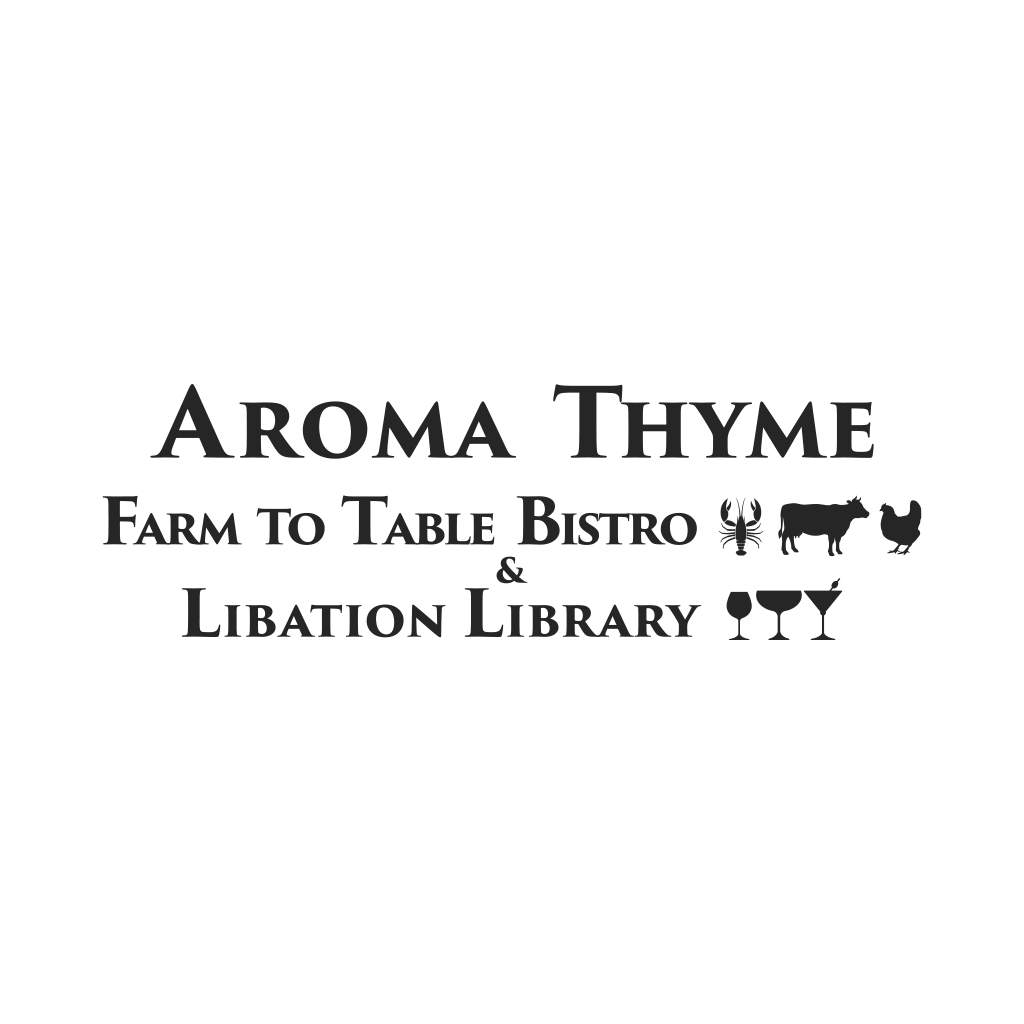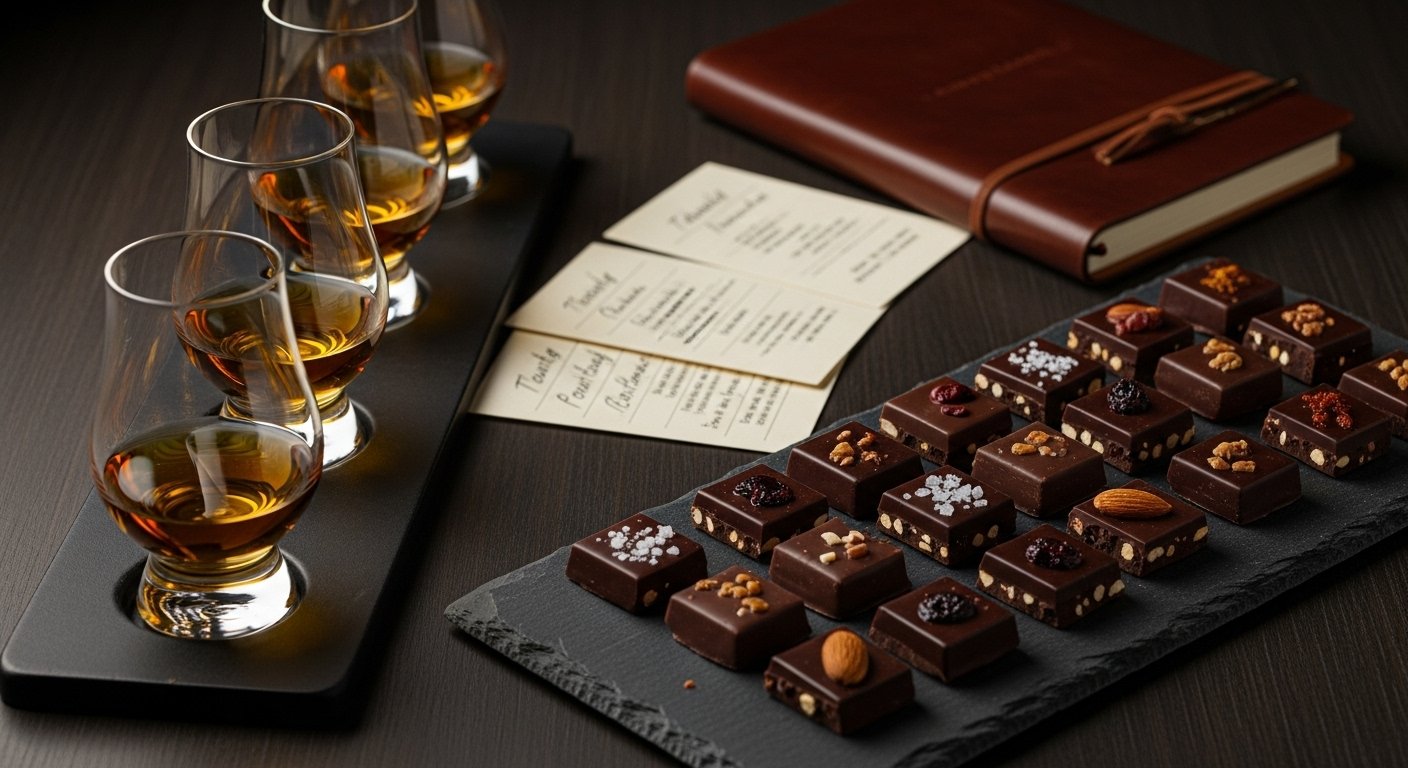Introduction
Chocolate and whiskey are both products of centuries-old traditions, each offering complexity, depth, and cultural resonance. While either may be enjoyed on its own, the act of pairing them together creates opportunities for heightened sensory experiences. This practice, rooted in both culinary science and sensory analysis, relies on principles of flavor chemistry, texture, and balance.
This paper explores the interaction between fine-flavor chocolate and whiskey, drawing from established pairing theory while referencing specific whiskey examples to illustrate practical applications.
The Principles of Flavor Pairing
A successful pairing is more than combining two high-quality products. It relies on the concept of synergy, where the sensory experience of two items consumed together surpasses that of each individually.
Key sensory dimensions include:
- Taste: The five basic tastes—sweet, sour, bitter, salty, and umami—interact in predictable and often complementary ways.
- Aroma: Flavor perception is dominated by olfaction. Aromatic overlap, such as roasted, nutty, or fruity notes, often signals compatibility.
- Mouthfeel: Whiskey may present as warming, oily, or drying, while chocolate can be creamy, fatty, or astringent. Interactions at this level can amplify or soften one another.
- Texture: A velvety dark chocolate may harmonize with a smooth whiskey, while a crunchy inclusion (nuts, salt crystals) introduces contrast.
Pairing is therefore not arbitrary; it is rooted in the biochemical compounds and sensory receptors that govern taste and aroma perception.
Chocolate as a Pairing Medium
High-quality chocolate is distinguished by three characteristics:
- Fine-flavor cacao: Derived from heritage varietals, offering distinctive fruity, floral, or nutty profiles.
- High cacao content (60% and above): Reduces sugar dominance, allowing bitterness, acidity, and nuanced aromatics to emerge.
- Processing methods: Fermentation, roasting, and conching shape volatile compounds that mirror those found in whiskey aging.
Chocolate’s complexity lies in its ability to express flavors ranging from caramel and honey to citrus, red fruits, or earthiness. This makes it uniquely suited for pairing with the equally diverse whiskey category.
Whiskey Flavor Determinants
Whiskey’s profile is determined by multiple production variables:
- Grain bill: Corn imparts sweetness, rye brings spice, barley contributes fruit and maltiness.
- Distillation technique: Influences purity and concentration of congeners.
- Cask maturation: Oak barrels impart vanillin, lactones, tannins, and caramelized compounds.
- Time and environment: Aging in humid vs. dry climates affects evaporation and concentration.
The sensory descriptors most relevant for pairing include vanilla, caramel, spice, fruit, nut, smoke, and peat.
General Pairing Guidelines
Literature and practitioner reports suggest several recurring strategies:
- Match aromatic families: For example, nutty chocolate with nut-forward whiskey.
- Balance intensity: Robust whiskeys require high-cacao chocolate; lighter whiskeys align better with milk chocolate.
- Contrast strategically: Sweet bourbon with salted chocolate; smoky scotch with fruit-infused chocolate.
- Consider fat content: Cocoa butter can soften the edges of higher-proof spirits.
Applied Pairings: Selected Whiskey Examples
The following pairings use whiskeys currently available on curated lists as case studies. These examples are not prescriptive but illustrate the application of pairing principles.
American Whiskey
- Rough Rider Bourbon (New York State)
Profile: Vanilla, oak, baking spice.
Suggested pairing: Milk chocolate (50–60% cacao) with caramel or nut inclusions. The chocolate’s sweetness balances the oak spice, while nut oils mirror the whiskey’s structure. - New Riff Single Malt (Kentucky)
Profile: Robust malt, oak, spice.
Suggested pairing: 75%+ dark chocolate with chili or ginger. The intensity of both prevents one from overwhelming the other.
Scotch Whisky
- GlenAllachie 12 Yr (Speyside)
Profile: Honey, dried fruit, vanilla.
Suggested pairing: Dark chocolate with almonds and sea salt. Almonds echo nutty sherry-cask tones; salt enhances perceived sweetness. - Lochlea “Our Barley” (Lowlands)
Profile: Floral, grassy, citrus.
Suggested pairing: Milk chocolate with candied orange peel. The chocolate’s creaminess softens citrus edges while aligning with floral aromatics. - Raasay Hebridean Single Malt (Island)
Profile: Maritime smoke, peat, dried fruit.
Suggested pairing: 80% cacao dark chocolate with dried cherries. Fruit contrasts peat smoke while cacao reinforces the whiskey’s roasted notes.
Irish and Irish-Style Whiskey
- McKenzie Straight Malt (Finger Lakes, New York)
Profile: Rich, oily, orchard fruit, nutty undertones.
Suggested pairing: 70% dark chocolate. The chocolate’s berry acidity complements orchard-fruit sweetness, while bitterness balances nutty richness.
Japanese Whisky
- Kaiyo Mizunara Oak
Profile: Sandalwood, coconut, spice.
Suggested pairing: White chocolate infused with matcha or floral elements (rose, jasmine). Subtle flavors align with the whiskey’s refined aromatic spectrum. - Fukano Rice Whisky
Profile: Umami, soft fruit sweetness.
Suggested pairing: Dark chocolate with herbal inclusions (mint or basil). Herbal notes temper umami while accentuating fruit sweetness.
New York Single Malts
- Stoutridge American Single Malt (Hudson Valley)
Profile: Fruity malt, non-peated, delicate.
Suggested pairing: Chocolate with apricot or peach inclusions. Fruit-forward elements in both reinforce each other. - Pine Barrens Cherrywood Smoked Malt (Long Island)
Profile: Smoke, cherry undertones.
Suggested pairing: Dark chocolate with dried cherries. A direct reinforcement pairing of cherry and smoke notes.
Extended Applications Beyond Whiskey
While whiskey remains the focal spirit for chocolate pairing, similar methodologies apply to other categories:
- After-Dinner Liqueurs: Cream liqueurs pair with dark chocolate desserts; chocolate liqueurs can create “like with like” synergy.
- Coffee-Based Cocktails: Whiskey or tequila combined with coffee and cacao-based liqueurs offers layered bitterness and sweetness.
- Agave Spirits: Extra-añejo tequilas share oak-driven vanilla and caramel with bourbon, allowing similar pairings with 70% cacao chocolate.
Conducting a Tasting
A systematic tasting sequence enhances analysis:
- Observe appearance of chocolate and whiskey.
- Smell both separately to identify key aromas.
- Taste whiskey alone.
- Allow chocolate to melt slowly on the tongue.
- Re-taste whiskey, noting transformations.
- Cleanse palate with water between trials.
Encouraging tasters to articulate differences in aroma, mouthfeel, and flavor evolution deepens sensory awareness.
Limitations and Common Pitfalls
- Excessive sweetness: Flavored whiskeys or low-cacao chocolate can result in cloying combinations.
- Tannin clashes: Dark chocolate paired with tannic red wines or heavily oaked spirits may accentuate bitterness.
- Floral overload: Strong lavender or rose chocolate often overwhelms whiskey’s balance.
- Coffee chocolate with smoky whiskey: Can create ash-like impressions.
Conclusion
Pairing chocolate and whiskey is both an art and a science. Rooted in shared flavor chemistry—vanillin, esters, lactones, and Maillard-derived compounds—the two create a matrix of possibilities when approached thoughtfully.
By analyzing each component’s aroma, taste, mouthfeel, and intensity, pairings can be constructed that highlight complementarity or purposeful contrast. Case studies demonstrate how bourbons, Speyside malts, peated island whiskies, Japanese expressions, and New York craft spirits each find natural counterparts in chocolates ranging from creamy milk to high-cacao dark.
Ultimately, this practice is less about rigid rules than about informed experimentation. Each pairing expands the palate’s vocabulary, encouraging deeper appreciation of both chocolate and whiskey as complex, culturally rich products.








